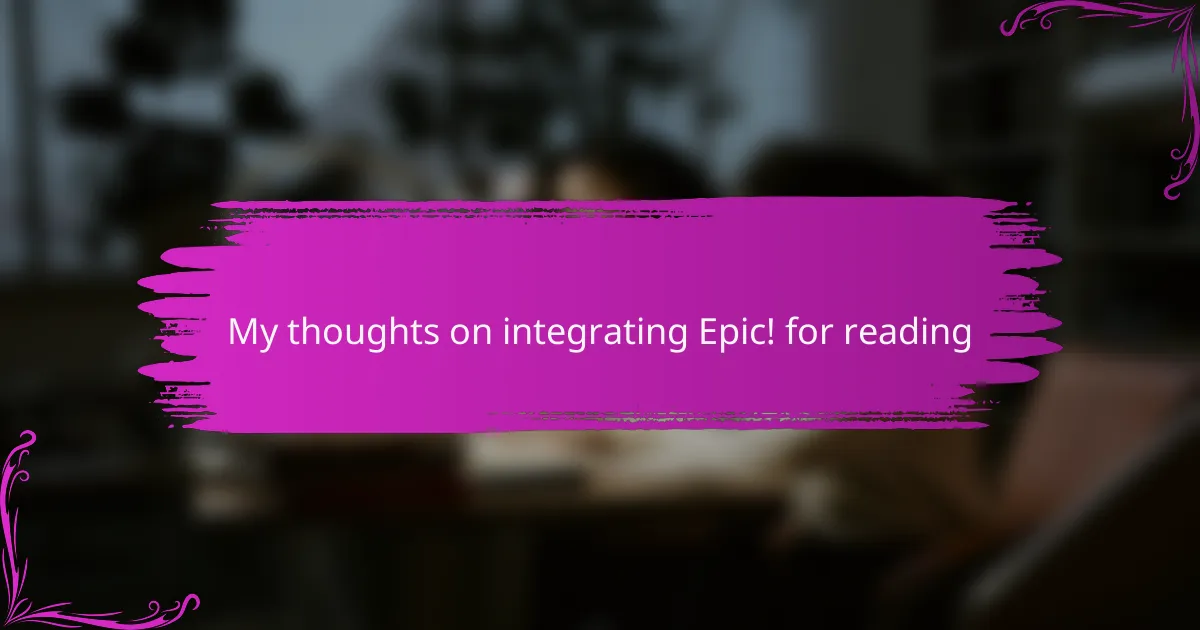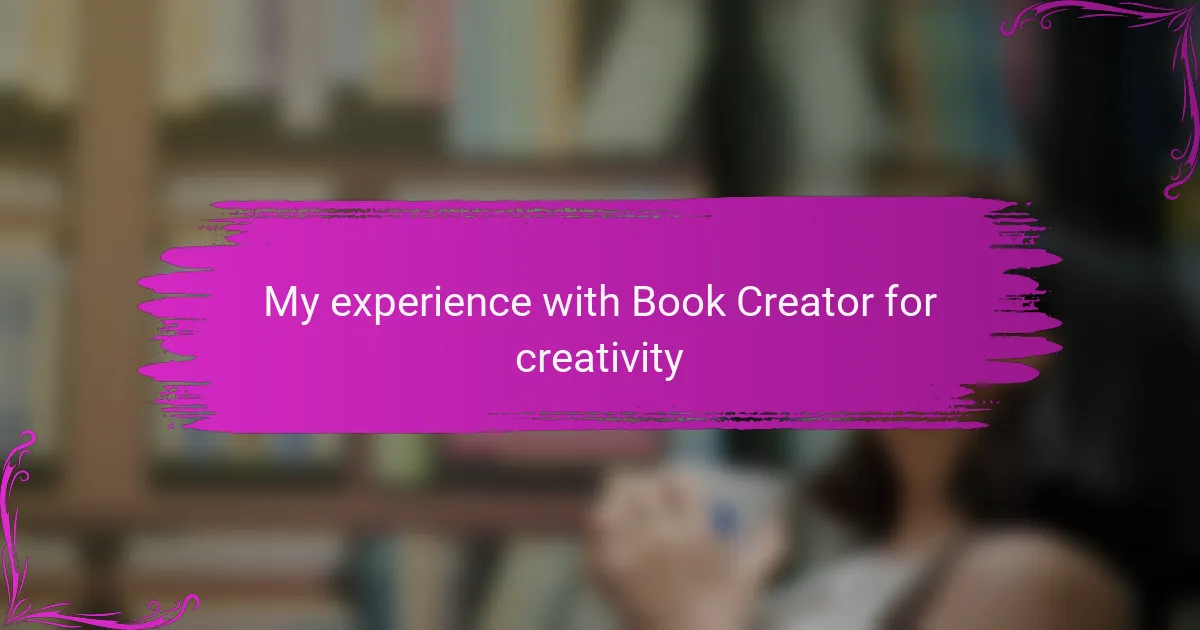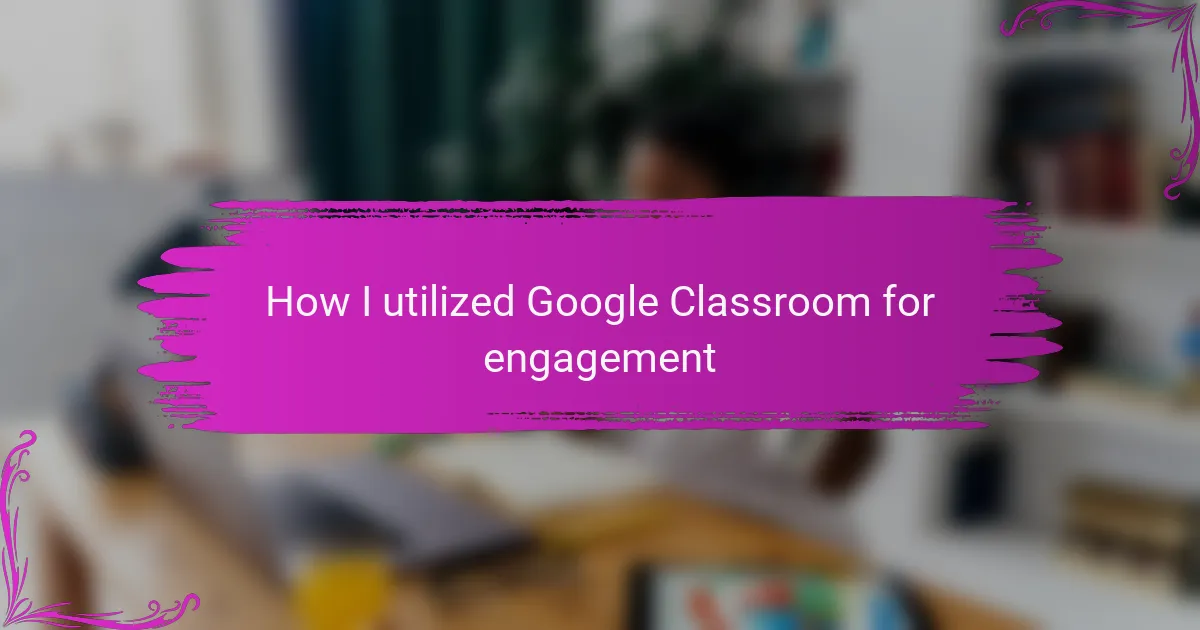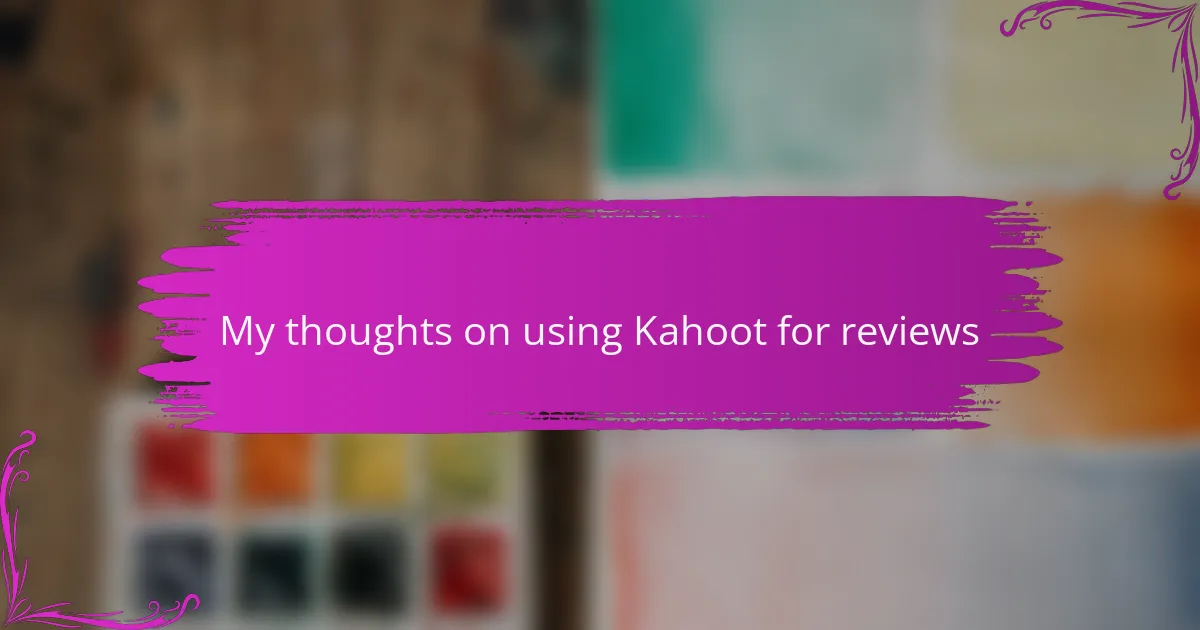Key takeaways
- Variety in literature resources, such as graphic novels and digital libraries, significantly enhances student engagement and comprehension.
- Reading fosters critical thinking, vocabulary development, and confidence in expression, contributing to long-term academic success.
- Digital tools like Epic! offer personalized learning experiences and gamified elements that motivate students to explore diverse reading materials.
- Effective strategies for using Epic! include utilizing curated collections, encouraging personalized reading lists, and leveraging interactive features to enhance learning.
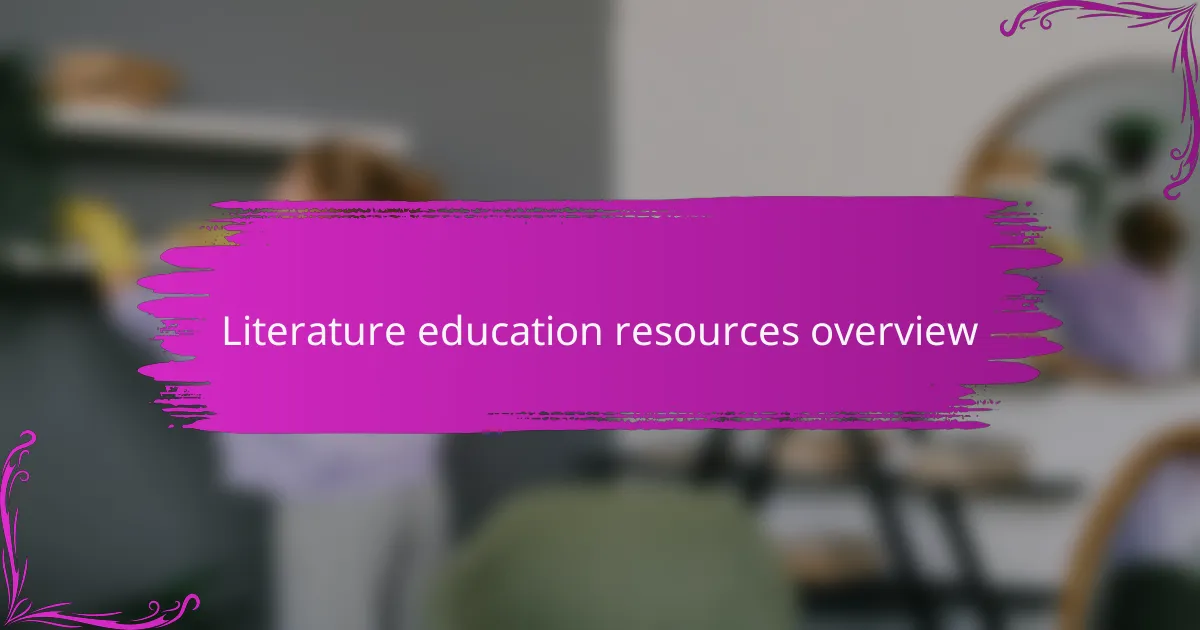
Literature education resources overview
When it comes to literature education resources, I find that variety is essential. Having access to diverse materials can really spark a student’s interest in reading. For instance, when I introduced graphic novels alongside traditional texts in my classroom, I noticed a remarkable shift. Students who typically struggled with classic literature were suddenly engaged. It was as if the visual storytelling unlocked a new level of comprehension and enjoyment for them.
Resources vary widely, from digital platforms like Epic to more traditional print options. Here’s a concise list of valuable literature education resources I’ve encountered:
- Epic: A comprehensive digital library for kids, featuring thousands of books.
- Project Gutenberg: A vast collection of free eBooks, especially for classics.
- Common Sense Education: Provides reviews and recommendations for literature apps and tools.
- Reading Rockets: Offers strategies and resources to support struggling readers.
- Scholastic: A blend of print and digital materials created to engage young readers.
Exploring these resources has not only enriched my teaching practice but also deepened students’ relationships with literature. I believe that the right tools can make all the difference in fostering a love for reading.
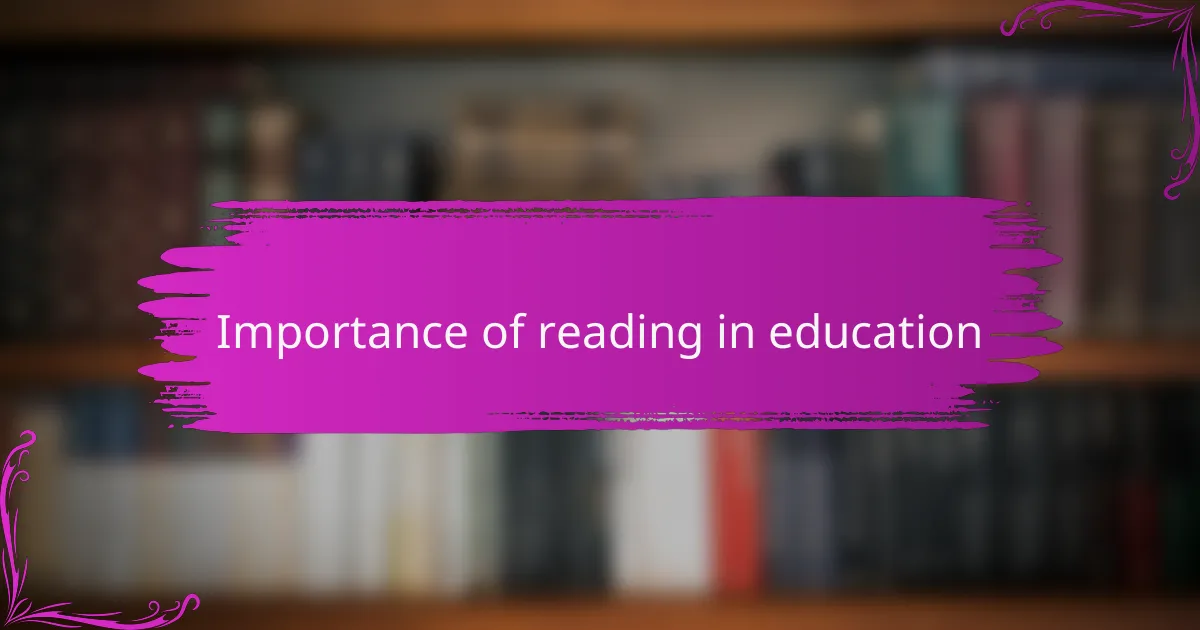
Importance of reading in education
Reading plays a crucial role in education by enhancing comprehension and critical thinking skills. I’ve seen firsthand how engaging with diverse texts stimulates curiosity and encourages analytical thinking in students. It not only supports academic success but also fosters a love for learning that lasts a lifetime.
From my experience, when students read regularly, they develop a richer vocabulary and a better grasp of language nuances. This is so important because it empowers them to articulate their thoughts and ideas more effectively. I remember a student who transformed from reluctant to enthusiastic reader; it was inspiring to witness their newfound confidence and expression.
Here’s a quick comparison of the benefits of reading versus other educational activities:
| Aspect | Reading | Other Activities |
|---|---|---|
| Comprehension | Enhanced through diverse texts | Limited depth of analysis |
| Vocabulary Development | Significant growth | Variable growth |
| Critical Thinking | Strongly fostered | Moderate engagement |
| Confidence in Expression | Greatly improved | Dependent on activity |
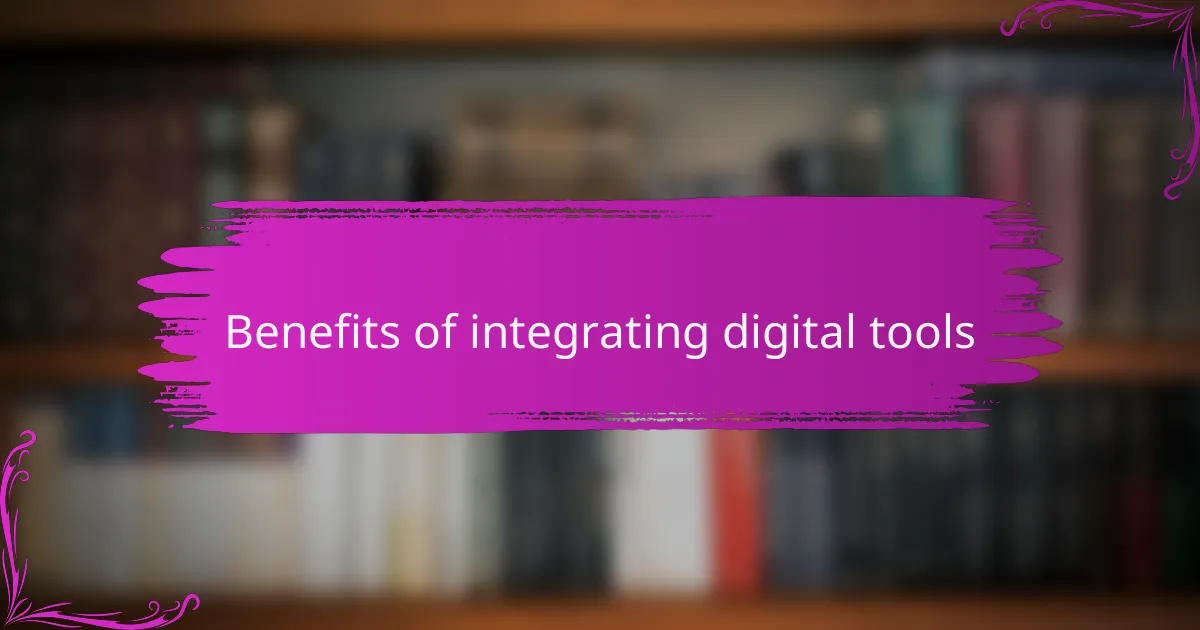
Benefits of integrating digital tools
Integrating digital tools like Epic into reading programs can truly enhance the learning experience for students. From my own observations, I’ve seen children become more enthusiastic about reading when utilizing interactive platforms. The variety offered by digital libraries motivates them to explore different genres and titles, making reading feel more like an adventure than a chore.
Furthermore, these tools can provide personalized learning experiences, catering to diverse reading levels and preferences. When I introduced Epic in a classroom setting, I noticed how students who once struggled with reading became engaged and confident through the platform’s gamified elements. It’s impressive how digital tools can transform the reading landscape, fostering a love for literature among young learners.
Here’s a quick comparison table that highlights the benefits of integrating digital tools like Epic versus traditional reading methods:
| Feature | Digital Tools (Epic) |
|---|---|
| Accessibility | 24/7 access to a wide range of books |
| Engagement | Interactive elements that keep learners motivated |
| Personalization | Tailors content to individual reading levels and interests |
| Analysis Tools | Progress tracking and assessment features |
| Variety | Offers diverse genres and formats (audio, video, etc.) |
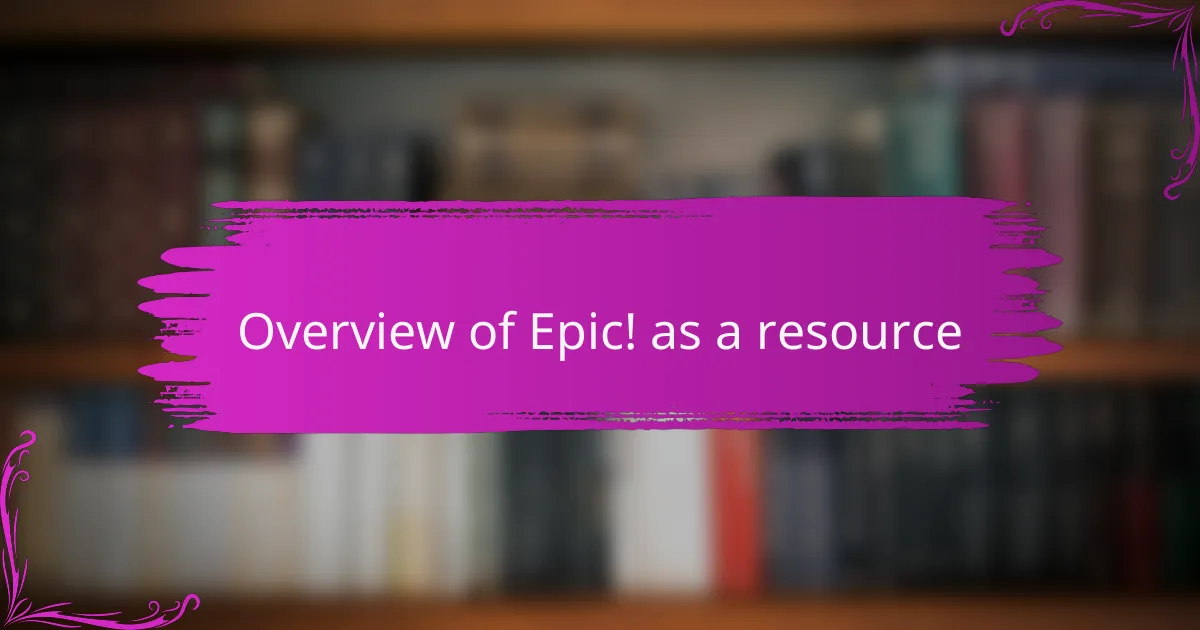
Overview of Epic! as a resource
Epic! is a remarkable digital library geared towards children, offering a vast collection of books, audiobooks, and educational videos. From my experience, it’s an engaging resource that captivates young readers with its user-friendly interface and diverse content. I’ve seen students become more enthusiastic about reading when they have access to stories that spark their imagination and cater to their interests.
What I particularly appreciate about Epic! is its focus on interactive features, like read-along options and quizzes that enhance comprehension. It goes beyond just presenting text; it encourages a deeper interaction with literature that can foster a lifelong love for reading.
Here’s a comparison table to highlight the features of Epic!:
| Feature | Description |
|---|---|
| Age Range | Suitable for children ages 12 and under |
| Content Variety | Includes thousands of books, audiobooks, and educational videos |
| Accessibility | Available on multiple devices – tablets, smartphones, and computers |
| Reading Levels | Offers books across various reading levels, making it suitable for different skill sets |
| Interactive Features | Includes read-along options and quizzes for improved engagement |
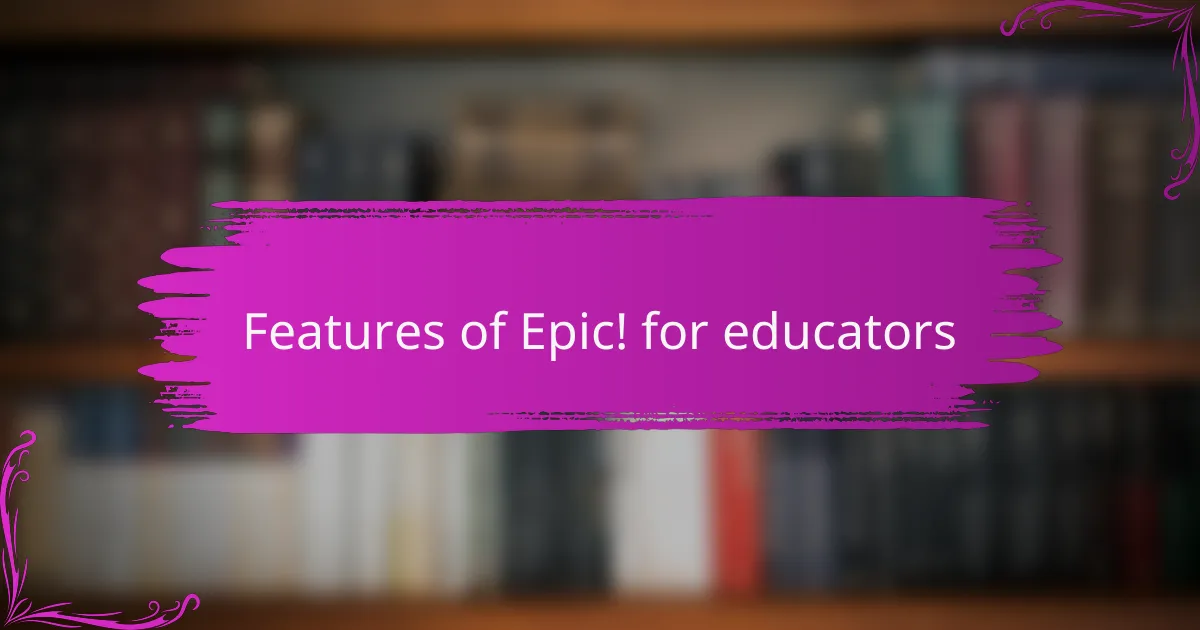
Features of Epic! for educators
The features of Epic! for educators really stand out in their ability to enhance the teaching experience. One of my favorite aspects is the extensive library of resources, which offers books across various genres and reading levels. I remember when I used it in my class; students were able to find books that not only matched their interests but also challenged them just enough to build their confidence.
Another impressive feature is the built-in analytics that allows educators to track student progress. This data is invaluable for tailoring instruction to meet individual needs. I can recall a time when I noticed a group of students improving their reading comprehension skills through targeted recommendations provided by Epic’s analytics. It made me feel fulfilled knowing I could support my students’ growth in such a precise way.
Additionally, Epic! offers gamified elements that turn reading into an exciting adventure. I’ve seen first-hand how these features motivate children to engage with the content. Who doesn’t love earning rewards for their reading milestones? This interactive approach not only fosters a passion for stories but also cultivates critical thinking skills as students reflect on what they read. Have you ever witnessed students cheering for each other’s achievements? It’s truly a heartwarming sight!
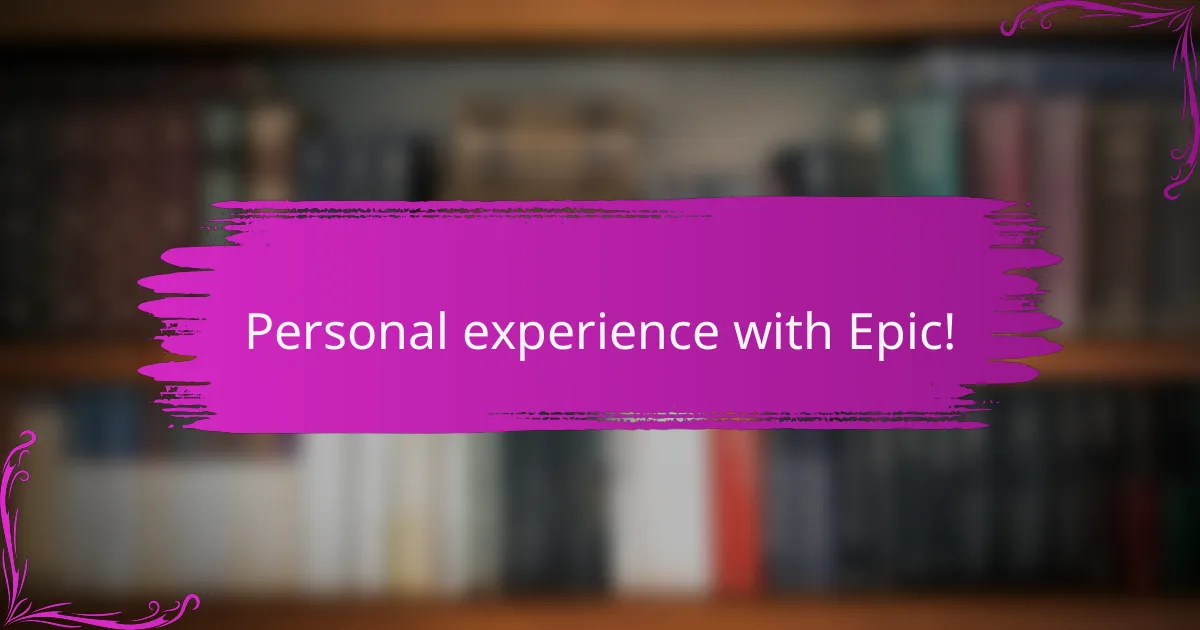
Personal experience with Epic!
Using Epic! in my own teaching has been a transformative experience. I remember the first time I introduced it to my students—they were instantly captivated by the vast selection of books and interactive features. It felt rewarding to see them excited about reading, exploring genres they’d never considered, and even engaging in discussions about the stories they encountered.
What I particularly appreciate about Epic! is how it fosters a love for reading in diverse learners. With audiobooks and read-aloud features, struggling readers gain confidence as they enjoy stories alongside their peers. The platform personalized my approach, allowing me to curate a collection of books tailored to individual interests and reading levels.
- Engaging selection of books that appeals to varied interests.
- Features like audiobooks support diverse learning styles.
- Allows for personalized reading experiences, boosting confidence.
- Encourages collaboration and discussion among students.
- Provides educators with valuable insights into student reading habits.
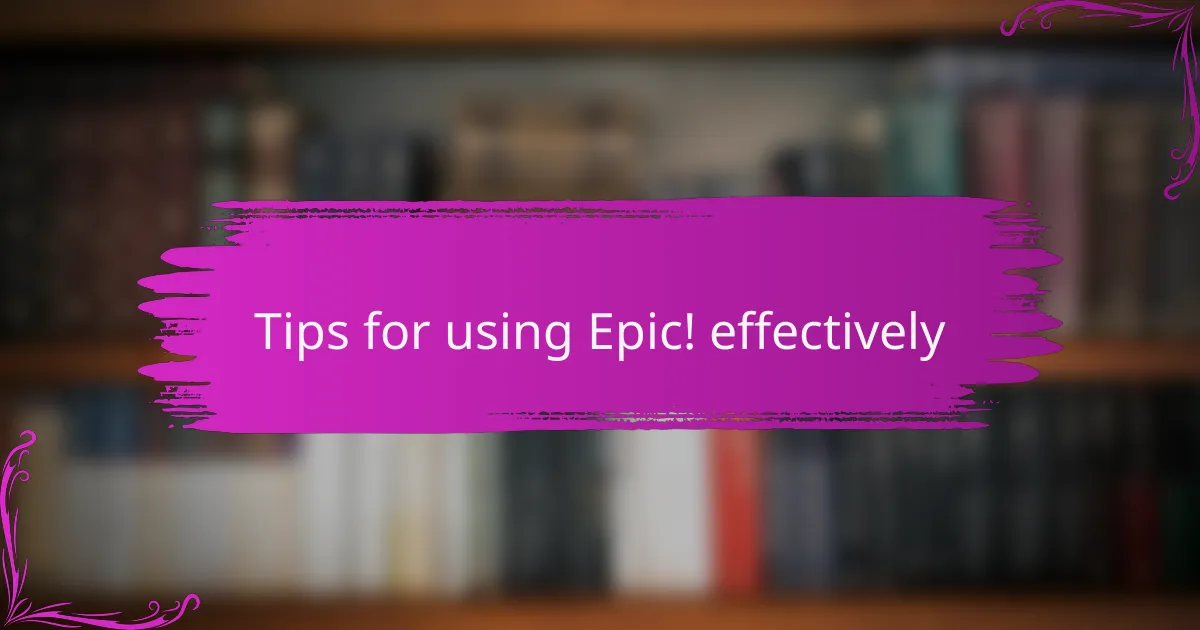
Tips for using Epic! effectively
When using Epic! for reading, I’ve found a few strategies that really enhance the experience. First, exploring the curated collections based on themes or subjects is a great way to find engaging content quickly. I remember spending an afternoon with my students diving into a collection about animals—they were captivated by the interactive elements, which boosted their interest and comprehension.
Another tip is to encourage students to create their own reading lists. This not only empowers them to choose what they want to read but also gives them a sense of ownership over their learning. I still remember the excitement in my classroom when students shared their personalized lists with each other. It fostered a sense of community and collaboration that added to their overall enjoyment of reading.
Here’s a comparison table that highlights some effective strategies:
| Tip | Description |
|---|---|
| Curated Collections | Use themed collections to quickly find engaging content that will capture students’ interest. |
| Personalized Reading Lists | Encourage students to create their own lists, fostering ownership and excitement in their reading journey. |
| Interactive Features | Utilize the interactive elements of Epic! to enhance comprehension and keep students engaged. |
